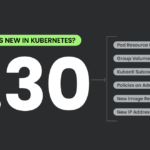
Containers and Kubernetes are becoming increasingly important for building cloud-native applications and enabling multi-cloud deployments. This blog post answers the most common questions that CTOs and technology leaders have about these technologies.
Benefits and Challenges
- Benefits: Faster development cycles, increased developer productivity, application modernization.
- Challenges: Skills gap, mature DevOps practices needed, platform selection, measuring ROI, organizational structure.
Key Findings
- Over 95% of organizations will use containers in production by 2029 (up from less than 50% in 2023).
- Large cloud providers and container management vendors compete fiercely.
- Choosing the right platform and measuring ROI are critical for success.
Recommendations
- Ensure a strong business case and develop a DevOps culture before deploying Kubernetes at scale.
- Create a platform team to manage platform selection, automation, and collaboration with developers.
- Consider packaged software or cloud-managed services for easier management and multicloud support.
- Measure benefits with technical (velocity, release success) and business metrics (growth, cost reduction).
Top 10 FAQs with Answers
1) What are some of the key benefits of containers and Kubernetes?
A: Containers and Kubernetes offer several advantages, including:
- Faster development and deployment: Containers simplify application packaging, enabling rapid deployments with frequent updates and rollbacks.
- Consistent environments: Containers ensure consistent application behavior across development, testing, and production environments.
- Scalability and isolation: Easily scale resources and isolate applications for improved security and stability.
- Flexibility and choice: Kubernetes is backed by a vast ecosystem, providing flexibility and potentially lowering vendor lock-in.
2: What limitations and challenges should we be aware of?
A: While beneficial, containers and Kubernetes also come with challenges:
- Platform complexity: Using Kubernetes for simple applications might be overkill due to its inherent complexity.
- Security concerns: Deploying containers at scale requires new security models, collaboration across teams, and a mature DevSecOps process.
- Automation and governance: Successful deployments necessitate extensive automation, consistent operations, and upgraded tools and processes.
- Culture and skills: Building and operating containerized applications requires specific skills across development, security, and operations teams.
3: What are the common use cases for containers and Kubernetes?
A: Containers and Kubernetes are well-suited for various scenarios, including:
- Microservices architecture: They provide a strong foundation for managing and scaling independent microservices.
- DevOps enabler: Containers facilitate CI/CD by isolating code, simplifying modification and updates throughout the development lifecycle.
- Application portability: Containers and Kubernetes enable applications to run consistently across hybrid or multicloud environments.
- Legacy app modernization: Improve deployment efficiency and isolation for legacy applications.
4: Can commercial off-the-shelf (COTS) applications be deployed in containers?
A: While container support for COTS applications is increasing, it varies by vendor. Some ISVs offer strong Kubernetes support, while others might not, especially for Windows-based or enterprise applications. It’s essential to check with your COTS vendors for their containerization strategy and roadmap.
5: How do we determine which applications are good candidates for containers and Kubernetes?
A: Applications with the following characteristics are good initial candidates for containerization:
- Few external dependencies
- Runs on containerized infrastructure and platforms
- Doesn’t require direct persistent data management
- Needs frequent code changes or elastic scaling
- Has a vendor-supported container image (if a COTS application)
6: How do we measure the ROI of our container deployments?
A: Carefully consider both potential benefits and costs to ensure a positive return on investment:
Benefits:
- Increased developer productivity
- Faster deployments and improved IT efficiency
- Reduced operational overhead
Costs:
- Container and platform subscriptions
- Infrastructure acquisition and upgrades
- Staff training and hiring
- Rollout and implementation services
7: What skills and roles do we need to succeed with our Kubernetes deployment?
A: The success of your Kubernetes deployment depends on various roles, including:
- Developers
- Platform engineers
- Build and release engineers
- Security teams
- Site reliability engineers (SREs)
Close collaboration and shared responsibility between developers and platform teams are crucial for successful container deployments.
8: How do we deploy Kubernetes? What are the pros and cons of various deployment models?
A: There are three main deployment models for Kubernetes:
- Public Cloud Container Services: Offered by cloud providers (e.g., AWS EKS, Azure AKS, Google GKE).
- Pros: Simpler operations, faster deployment, no need to manage Kubernetes master services.
- Cons: Less control over the environment.
- Container Management Software: Packaged software solutions providing Kubernetes with additional features (e.g., Red Hat OpenShift, VMware Tanzu).
- Pros: Easier consistency across hybrid/multicloud environments.
- Cons: More complex to manage than cloud services.
- SaaS-Based Management Services: Manage Kubernetes clusters across environments (on-premises, multicloud).
- Pros: Operational simplicity and speed, potentially easier than software-based management.
- Cons: Vendor lock-in, limited control compared to self-managed options.
Choosing the right model depends on your needs:
- Public cloud services are ideal for those prioritizing speed and simplicity.
- Container management software is better for managing complex hybrid/multicloud deployments.
- SaaS-based management offers a balance between ease of use and control.
Additionally, consider an upstream open-source version for maximum customization, but it requires significant expertise.
9: Who are the key Kubernetes platform vendors and startups?
A: The market includes established players with comprehensive features (listed in Gartner’s Magic Quadrant) and niche vendors with specific strengths:
- Established Vendors: Amazon Web Services (AWS), Canonical, Google, Huawei, Microsoft, Mirantis, Oracle, Red Hat, SUSE, Tencent, VMware.
- Startups and Niche Vendors: D2iQ, Giant Swarm, HashiCorp, Hewlett Packard Enterprise (HPE), IBM, Kubermatic, Platform9, Rafay Systems, Spectro Cloud.
10: What are the emerging trends around containers and Kubernetes?
A: Several key trends are shaping the future of containers and Kubernetes:
- VM Convergence: Managing VMs and containers with a unified platform (e.g., projects like KubeVirt).
- Stateful Application Support: Increased use of containers for stateful applications, enabled by Kubernetes features like Persistent Volumes (PVs) and APIs.
- Edge Computing: Leveraging containers’ lightweight nature for edge environments, with distributed cloud offerings from vendors and bare-metal deployments gaining traction.
- Serverless Convergence: Cloud providers offering serverless options for containerized applications (e.g., AWS Fargate, Azure Container Instances). Serverless functions are also increasingly supporting container images.
- Artificial Intelligence: Intersection of AI and containers in two ways:
- New projects like Kubeflow for orchestrating AI workflows within Kubernetes.
- Large language models for automating and simplifying Kubernetes deployments and operations.
Emerging Trends
- VM convergence: Managing VMs and containers with a unified approach.
- Stateful application support: Running stateful workloads in containers with Kubernetes.
- Edge computing: Utilizing containers for lightweight edge deployments.
- Serverless convergence: Running containers in a serverless environment.
- Artificial intelligence: Using AI to automate Kubernetes deployments and operations.
In Conclusion
Understanding the potential and challenges of containers and Kubernetes empowers leaders to make informed decisions for a competitive advantage.
Reference to the Article- Kubermatic
Please click the button below to register and access detailed information.













